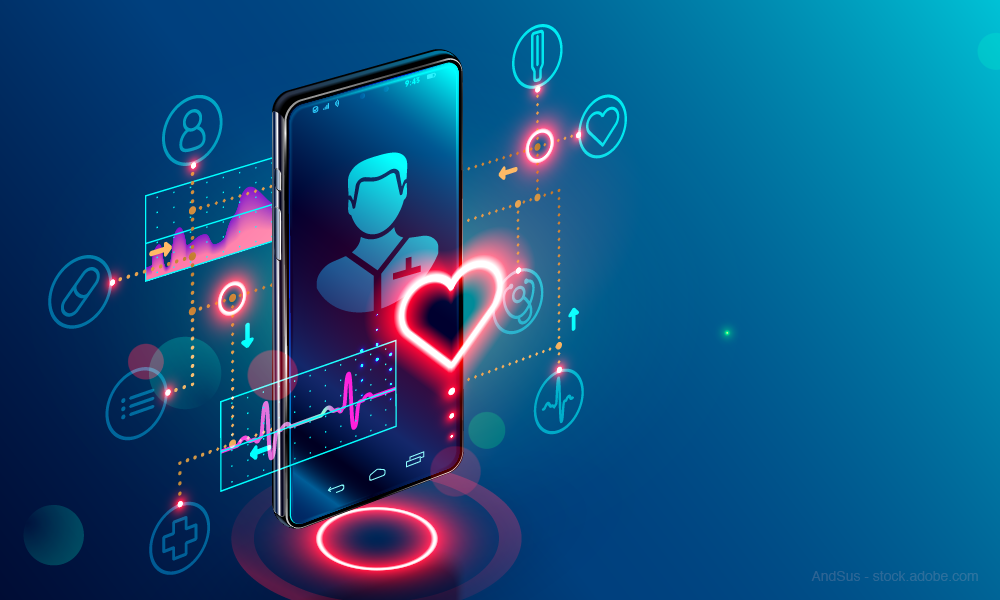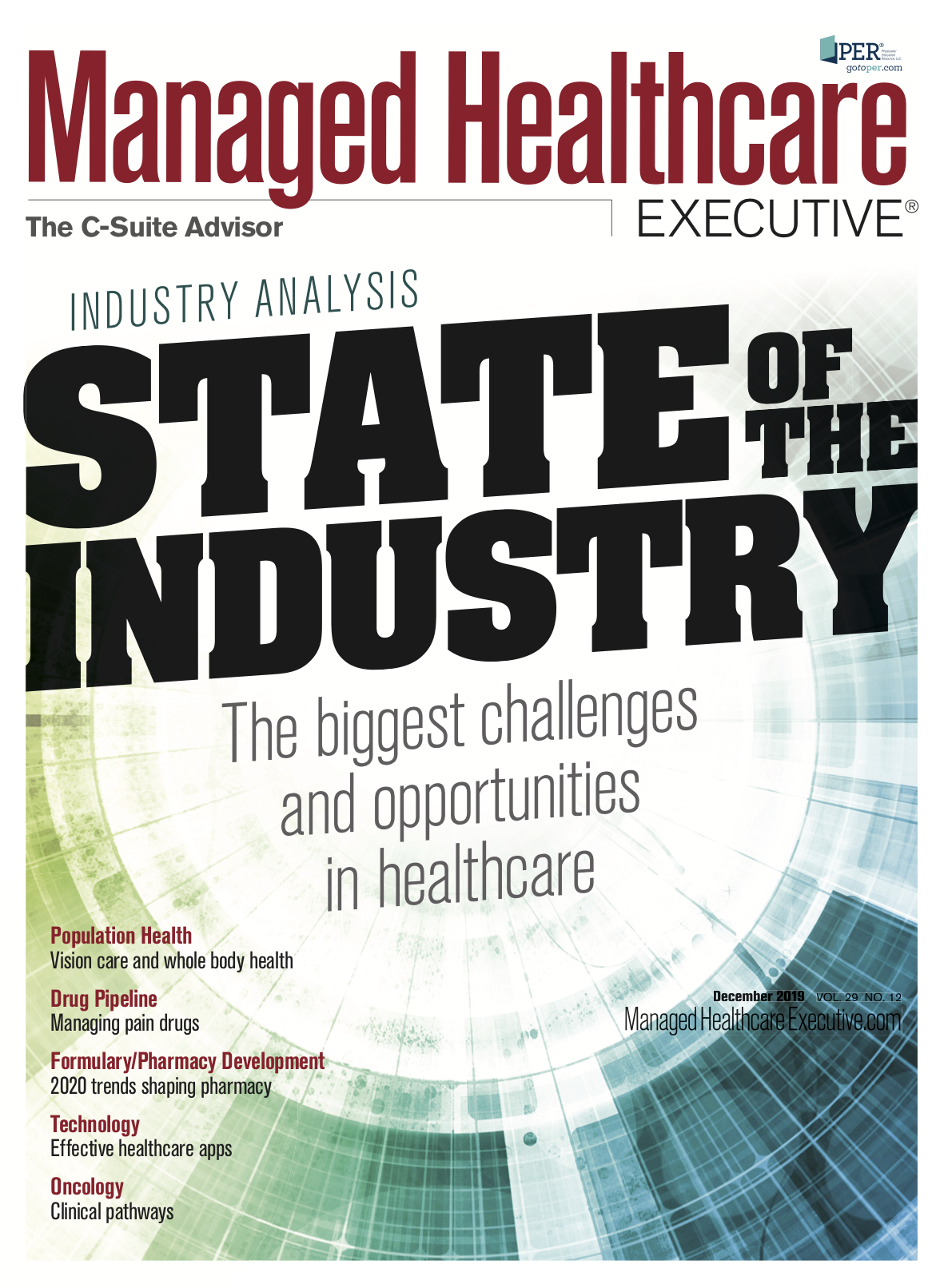Finding the Most Effective Healthcare Apps
The healthcare industry is investing considerable resources to reach and engage consumers through mobile devices.

Benjamin Kanter

Vincent Martino

As value-based care initiatives continue to drive healthcare decisions, it’s no surprise that mobile applications are being used by providers and payers as a way to connect with patients and connect silos within the healthcare community.
But as mobile apps on smartphones are commonplace for many consumers, it can be overwhelming to decipher what apps are the most useful. There are more than 318,000 healthcare mobile apps available to download, according to a report by IQVIA Institute.
At this point of market saturation, mobile apps in the healthcare space are expected by patients and consumers, says Benjamin Kanter, MD, FCCP, chief medical information officer of Vocera, a healthcare technology company with more than 20 years of experience in developing mobile apps and digital communications, in San Jose, California.
“The real question is how can we improve our clinical and operational efficiency? And you can't do that without a modern communication and collaboration platform,” Kanter says. “I would suggest that executives should not differentiate between the applications that help them communicate from the applications that also help them process, mobilize, and act on data.”
Though many consumer-facing healthcare apps have become more robust in their data collection by using cloud and machine learning technology, executives still have to wade through apps’ capabilities in order to find the ones that are the most effective, says Paul Cerrato, MA, author of Protecting Patient Information and the coauthor of Realizing the Promise of Precision Medicine.
Related: Mobile Apps Bridge the Patient-Provider Gap
“Physicians and healthcare organizations that are making financial decisions have to find those apps that are really well supported by the evidence, not just conceptually well-supported but in terms of actual experiments to show that these apps work,” Cerrato says.
Static apps that offer just education and information aren’t as useful as those that can help patients with specific health issues, Cerrato says.
“If you have a patient who wants more out of his or her healthcare app, then you have to start thinking about investing in interactive programs,” he adds.
New mobile app technology shouldn’t be a one-off investment but part of an overall digital strategy, says Vincent Martino, chief product officer and co-founder of VisitPay, a mobile patient portal solution.
“The investments health systems need to make in mobile development will depend on how they think about mobile strategy within their larger service offerings,” Martino says. “In our experience, health system leaders should think about mobile no differently than they think about web in terms of importance. In fact, we encourage our clients to rollout their web and mobile strategies concurrently. Any features that are on the web should be mobile-optimized.”
Mobile apps for financial support
More than 40% of working adults have problems with medical debt-amounting to more than 72 million Americans, according to a survey by The Commonwealth Fund. As high deductible healthcare plans are on the rise, and patients are more financially vested in costs, healthcare organizations have to be more agile in fitting patients’ needs.
“Consumers’ perceptions of the overall healthcare experience are heavily influenced by the level of transparency, control, and convenience provided by the billing experience. A one-size-fits-all billing strategy lacks the flexibility and personalization required to meet people where they are in their lives,” Martino says.
After surveying more than 1,700 patients that use VisitPay, the company found that a number of variables can determine how patients manage their billing obligations and the best way to engage with them.
“People manage their lives through their mobile devices. They schedule appointments, plan their social lives, order products and services, and manage their money through their phones. More consumers are expecting to be able to manage their healthcare needs anywhere, anytime, and on their own terms,” Martino says. “Most industries, including healthcare, are investing considerable resources to reach and engage consumers through mobile devices.”
Martino says ongoing communication about mobile app offerings is important in order to boost and maintain adoption.
“Four years ago, our clients were reporting that 20% of the patients who used our platform to manage their billing did so through their mobile device. Today, that average is 40%,” Martino says. “By comparison, web-based logins average 56% across our health system clients. The gap is quickly closing, and I expect mobile payments to exceed web-based payments within two years.”
Mobile apps for internal communications
Kanter says that mobile apps can be an integral part of an internal communication strategy for practitioners. He estimates that less than 15% of nurses use smartphones as a part of their workday routine.
“If you make communications easier, you're not only improving the tasks of the caregivers, you actually improve the lives of the patients as well,” Kanter says.
He adds that practitioners can choose between providing staff with their own devices or creating a “bring-your-own device” policy where staff can add a secured app to their smartphones. Kanter says each way is affected depending on the company’s culture.
“I think that by making communication easier, it actually makes somebody's job easier,” Kanter says. “It also makes hospitals and healthcare environments safer because when communications are hard to accomplish, they tend not to occur. We know that the majority of healthcare issues are almost invariably traced to a problem in communication.”
Vocera has created a mobile app, Vocera Vina, that helps clinicians make decisions in real time by prioritizing the most urgent information to the top of the inbox and delivering patient context as part of an inbound phone call, so they know what to focus on instantly. That means they get a meaningful picture of a situation quickly, when a patient’s status declines. The app also gives nurses the ability to communicate with others on the care team instantly.
Ultimately, Kanter says, internal apps that can offer real-time triage information is a part of a broader initiative to help healthcare organizations digest data properly.
“When we have mobile apps and software available to us all of the time because of the device in our pocket it isn't really a phone, it's just a mobile computer,” Kanter says. “I don't differentiate any longer between mobile apps and the apps that sit on the computer. The question is, what are we going to do with all this computing power that's available to us in relationship to healthcare?”
The future of voice-activated apps in healthcare
Cerrato says many hospitals are considering voice-activated assistants, such as Amazon Alexa, to enhance internal communications for nurses and other staff. In April 2019, Amazon issued an invite-only call to developers to create HIPAA-compliant healthcare skills for Alexa, after a trial at Cedars-Sinai Medical Center in Los Angeles. In August 2019, Amazon released six HIPAA-compliant healthcare skills with six healthcare providers, including:
- Scheduling same-day appointments (Atrium Health)
- Post-operation information and appointment management (Boston Children’s Hospital)
- Employees managing health goals and wellness incentives (Cigna)
- Prescription home delivery status (Express Scripts)
- Connecting blood monitoring device and voice-command glucose readings (Livongo)
- Helping patients locate nearby urgent care facilities and schedule same-day appointments (Providence St. Joseph Health)
“Hospitals should be thinking about embedding Alexa, Google Assistant, or some of the other mobile assistants into the hospital environment so they can, not only improve the patient experience but also give the clinicians less of a work load,” Cerrato says.
Voice assistants that recognize speech can be used for medical transcription and chart searches during patient appointments. And hospitalized patients can use them to request services and information from on-site staff.
Cerrato adds, “Instead of a patient hitting a call button to request the nurse, he or she can simply ask, ‘Alexa, when am I going to get my next medication?’”

In the Scope of Virtual Health and the Future of “Website” Manner, Per Ateev Mehrotra
August 10th 2023Briana Contreras, an editor of Managed Healthcare Executive, had the pleasure of catching up with MHE Editorial Advisory Board Member, Ateev Mehrotra, MD, MPH, who is a professor of healthcare policy at Harvard Medical School and an Associate Professor of Medicine and Hospitalist at Beth Israel Deaconess Medical Center.
Listen
Extending the Capabilities of the EHR Through Automation
August 2nd 2023Welcome back to another episode of "Tuning In to the C-Suite," where Briana Contreras, an editor of Managed Healthcare Executive, had the pleasure of chatting with Cindy Gaines, chief clinical transformation officer at Lumeon.
Listen